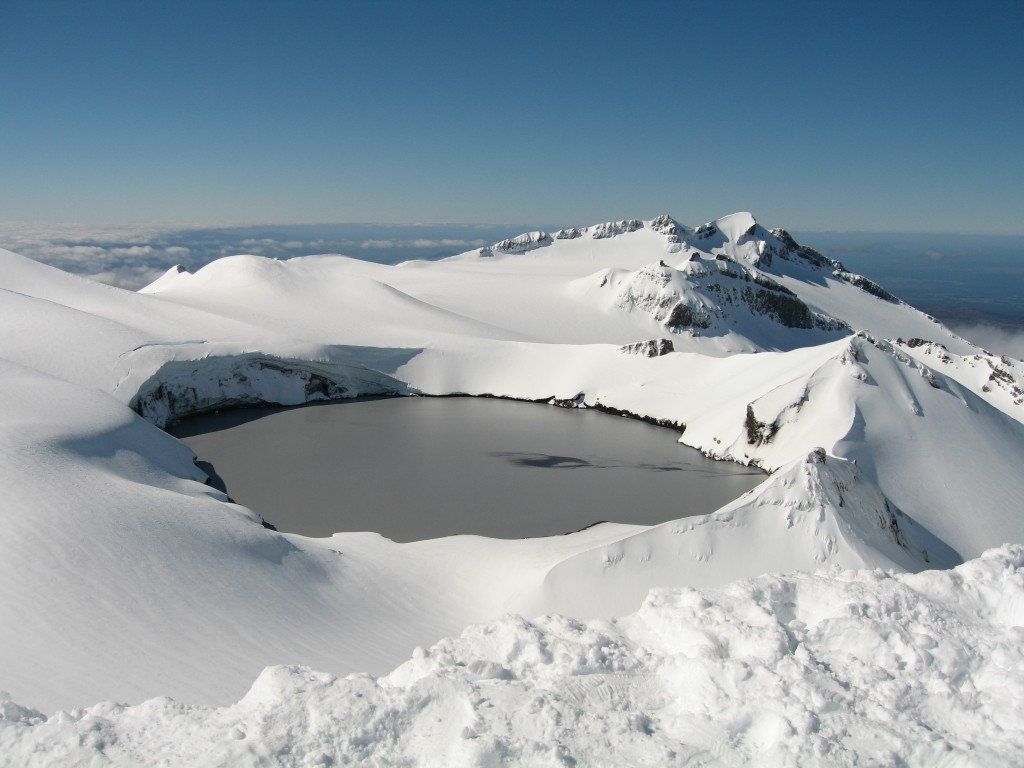
“Crater lake” by Michelle Salmon, distributed by the European Geosciences Union under a Creative Commons licence
At the border between the Pacific and Australian plates, crossed by the Pacific Ring of Fire, New Zealand is one of the most geologically active countries in the world. Volcanoes abound in this island-country, which contains the “world’s strongest concentration of youthful rhyolotic volcanoes“, and earthquakes are a frequent presence. Mount Ruapehu, a stratovolcano located in the middle of the North Island, is the largest active volcano in New Zealand, and is also one of the world’s most active. Being the highest point of the North Island, Ruapehu also sees frequent snowfall and hosts the country’s largest ski fields.
It was on a ski trip that Michelle Salmon, from The Australian National University, captured the stunning Crater Lake of Mount Reapehu. “This image was taken near the summit of Mount Ruapehu looking down on the volcanic crater,” she says. “The volcano’s active vent is filled by Crater Lake which varies in temperature from 10 to 50 degrees Celsius. This vent last erupted in 2007. There are three ski fields on this active volcano and this photo was taken on a ski trip a couple of weeks after a small eruption that sent waves from the lake crashing into the wall of the crater. The crack in the snow on the far side of the crater is a result of this eruption.”
New Zealand is home to some of the most beautiful landscapes in the world, many of which were captured on film by director Peter Jackson in his The Lord of the Rings movies. Mount Ruapehu featured in the trilogy: it was one of two volcanoes used to represent Mount Doom, a volcano in Middle Earth, the fictional setting of The Lord of the Rings.
Imaggeo is the EGU’s online open access geosciences image repository. All geoscientists (and others) can submit their images to this repository and since it is open access, these photos can be used by scientists for their presentations or publications as well as by the press and public for educational purposes and otherwise. If you submit your images to Imaggeo, you retain full rights of use, since they are licensed and distributed by the EGU under a Creative Commons licence.
